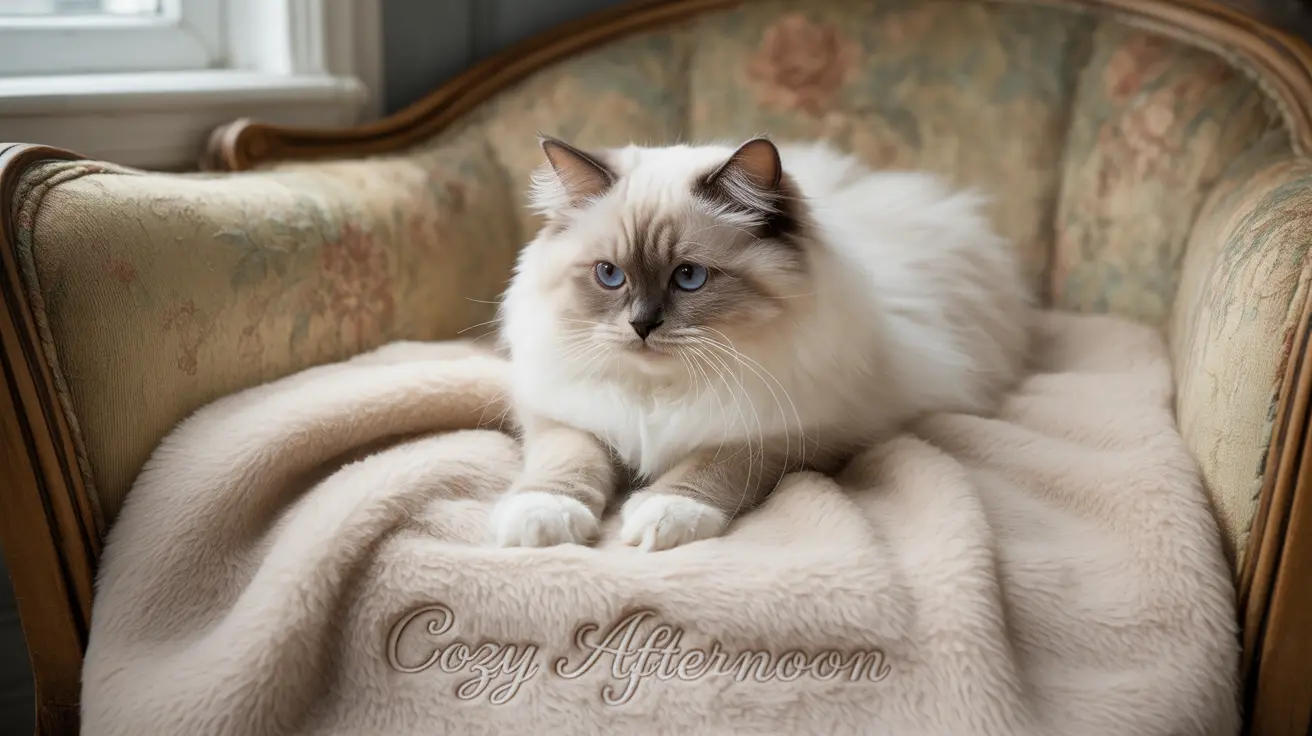Introduction to Cat Kneading
Cat kneading, often affectionately called "making biscuits," is one of the most distinctive and endearing behaviors our feline companions display. This rhythmic pushing motion, where cats press their paws alternately against soft surfaces, is deeply embedded in their developmental history and serves multiple purposes in their adult lives.
For many cat owners, watching their pet methodically press its paws into a blanket, cushion, or lap is a familiar and heartwarming sight. While this behavior may seem perplexing at first, it is actually a fundamental aspect of feline nature. Understanding why cats knead reveals much about their emotional state, instincts, and the profound bond they share with their human caregivers.
Exploring the significance of kneading can help pet owners better appreciate their cats' needs and strengthen the unique bond between humans and their feline companions. Let’s delve into the captivating world of cat kneading, from its origins to practical strategies for management.
The Origins of Kneading: A Behavior Rooted in Kittenhood
The story of cat kneading begins in the earliest days of a kitten’s life. During nursing, kittens instinctively knead their mother’s belly to stimulate milk production. This action fosters a powerful connection between kneading, comfort, nourishment, and security. These early experiences establish kneading as a fundamental comfort behavior that often continues throughout a cat's life, even long after they have matured into adulthood.
Cats and Milk Kneading: The Developmental Connection
While nursing, kittens not only receive sustenance but also create lasting bonds with their mothers through the act of kneading. The repeated motion helps to stimulate milk flow and associates the behavior with positive emotions and security. As a result, adult cats often return to kneading when they seek comfort or wish to express affection, showing how formative this early behavior truly is.
Understanding Cat Communication Through Kneading
Kneading serves as a subtle yet sophisticated form of cat communication. When cats knead, they are not just expressing their contentment, but also utilizing the scent glands located in their paw pads to mark their territory. This dual function of communication and scent-marking signals to other cats and people that the kneaded object or person is claimed as their own. Additionally, when a cat chooses to knead on its human companion, it is a sign of deep trust and attachment, indicating that the cat feels safe and secure in their presence.
The Multiple Functions of Kneading
Kneading fulfills several important roles in a cat’s life, each contributing to their overall well-being. Below are some of the key functions of kneading for cats:
- Stress Relief and Emotional Regulation: The repetitive, soothing motion of kneading serves as a natural stress-reliever. It helps cats emotionally self-regulate, especially during times of anxiety or change.
- Territory Marking: Cats possess scent glands in their paw pads that release pheromones when they knead. This subtle marking technique helps them establish ownership over their environment.
- Physical Exercise: Kneading works out various muscles in the paws and limbs, promoting flexibility and keeping their muscles supple and healthy.
- Social Bonding: When cats knead their owners, it’s often an expression of affection and trust. This behavior strengthens the social bond between cat and human, enhancing the mutual sense of security.
Why Cats Knead Blankets and Other Surfaces
Cats are especially drawn to knead soft surfaces like blankets, pillows, or cozy clothing. This preference is far from random. Soft textures mimic the comforting feel of a mother cat’s fur, sparking the same sense of security and warmth that kittens experienced while nursing. For many adult cats, kneading these soft surfaces becomes a self-soothing ritual, offering both physical and emotional comfort. This instinctive drive explains why cats frequently seek out plush materials for their kneading sessions.
Managing Cat Kneading: Practical Tips for Pet Owners
Although kneading is a natural and healthy behavior, there are times when it might require some gentle management to ensure that both the cat and its owner remain comfortable. Here are some effective strategies for managing kneading behavior:
- Provide Designated Kneading Surfaces: Offer your cat soft blankets or cushions specifically designated for kneading. This helps redirect the behavior away from delicate or valuable items.
- Keep Claws Trimmed Regularly: Trimming your cat's claws reduces the risk of accidental scratches during kneading sessions, keeping both you and your cat safe.
- Use Protective Blankets During Lap-Kneading: If your cat enjoys kneading on your lap, place a thick blanket or cushion between you and your cat to minimize discomfort.
- Never Punish Kneading Behavior: Since kneading is an instinctive and emotionally significant activity for cats, punishing it may cause confusion or stress. Instead, use positive reinforcement to guide desired behaviors.
- Redirect Gently When Needed: If kneading becomes excessive or occurs in inappropriate places, gently redirect your cat to an approved kneading surface without scolding or distress.
Cat Comfort Behaviors: Kneading vs. Purring
Kneading and purring are two common feline comfort behaviors that frequently occur together but serve distinct purposes. Kneading is primarily a physical action tied to contentment and memory, while purring is a vocalization that can indicate happiness, relaxation, or even an attempt to self-heal or request attention. Observing how your cat combines these behaviors can provide valuable insights into their emotional state and level of comfort.
Frequently Asked Questions
- What is cat kneading? Cat kneading is a rhythmic pushing motion using their paws, usually performed on soft surfaces like blankets, cushions, or laps.
- Why do cats knead? Kneading is an instinctual action originating from kittenhood, closely associated with comfort, bonding, and security.
- Is kneading a sign of affection? Yes, most cats knead as a way to express contentment and affection towards their trusted humans.
- Do all cats knead? While most cats exhibit kneading, its frequency and manner can vary widely among individuals, and some may not knead at all.
- Why do cats knead on blankets? Cats knead soft surfaces because the texture mimics their mother’s fur, evoking a familiar sense of safety from early kittenhood.
- Can kneading be painful for owners? Sometimes, kneading can cause discomfort or minor scratches if the cat uses its claws, especially when kneading a human’s lap or bare skin.
- How can I manage excessive kneading? Regularly trim your cat’s claws and offer dedicated kneading blankets or pillows to help manage this behavior.
- Does kneading mean my cat is happy? Generally, yes. Kneading is a reliable indicator that your cat feels safe, content, and relaxed in its environment.
- Why do kittens knead while nursing? Kneading stimulates the flow of milk from their mother, ensuring they receive proper nourishment during the crucial early stages of life.
- Should I stop my cat from kneading? There is no need to stop a cat from kneading, as it’s a natural and healthy behavior. However, you can gently redirect the action if it becomes problematic or causes discomfort.
- Is it normal if my cat doesn’t knead? Absolutely. While kneading is typical, not all cats practice this behavior, and variations are perfectly normal within feline personalities.
Conclusion: Embracing Cat Kneading as a Natural Behavior
Recognizing cat kneading as a natural and instinctive feline behavior is crucial for maintaining a harmonious relationship with your pet. Understanding its significance and learning how to manage it effectively ensures that kneading remains a positive and enriching aspect of your shared life. By fostering an environment where your cat feels safe to express comfort and affection, you can deepen the unique bond between you and your feline companion.






